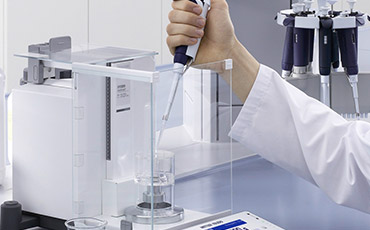Regular pipette calibration is crucial in the fast-paced laboratory operations, where accuracy is critical. Pipettes are essential instruments that enable precise and consistent liquid transfers.
However, there are serious concerns associated with the all-too-common oversight of failing to perform pipette calibration services, which can jeopardize the reliability of data, experimental results, and overall lab reliability.
Read!
Understanding the Basis of Reliable Outcomes with an Overview of Calibration
The methodical process of evaluating and modifying a pipette’s volume delivery precision is known as pipette calibration. By maintaining pipettes’ accuracy, this essential procedure protects the validity of research findings and experimental protocols. Calibration is a process that starts with careful testing against established standards to find any deviations and ends with changes to get the pipette back within specified accuracy boundaries.
Why Are the Perils of Ignoring Calibration a Quiet Danger?
The importance of calibrated pipettes in guaranteeing the precision, dependability, and repeatability of laboratory work cannot be overstated.
- Inaccurate Measurements: The dependability of experimental data is compromised when pipette calibration is skipped, as this leaves room for errors in volume delivery. Over time, even small variations might add up to cause noticeable differences.
- Data Integrity Compromised: The credibility of study findings can be compromised due to systematic mistakes in experimental data. This could have far-reaching effects on publications, conclusions, and the confidence of the scientific community.
- Challenges with Reproducibility: The precision of studies gets compromised resulting from omitted calibration. Precise manipulation of liquids is necessary for accurate results; hence, calibrated pipettes are crucial to reproducing experimental conditions.
- Regulatory Compliance at Risk: A lot of laboratories work in regulated settings where following calibration guidelines is required. Ignoring calibration puts regulatory compliance at risk, opening the door to audits, penalties, and even the suspension of research operations.
Inclusive Best Practices and Actions for Calibration in the Laboratory
- Creating a calibration strategy
In accordance with manufacturer guidelines and industry standards, develop a proactive pipette verification strategy. Periods of time that are regular, such as quarterly or semi-annual, should be established and followed regularly.
- Documentation and Record-Keeping
Keep thorough records of every action related to calibration. Dates of calibration, the outcomes, any modifications made, and the individuals in charge should all be included in the thorough paperwork. For quality assurance and audits, this material is an essential resource.
- Investing in High-Quality Pipettes
Long-term precision and dependability can be enhanced by choosing high-quality pipettes from reliable manufacturers. Precise liquid handling is based on a strong foundation of regular calibration and high-quality instruments.
- Training and Awareness of Staff
Encourage a culture of awareness among laboratory staff about the vital role that pipette calibration plays. Give thorough instruction on appropriate pipetting methods and the value of following calibration schedules.
The question still stands: Will your lab embrace the straightforward yet revolutionary process of pipette calibration in order to achieve precise, dependable findings, or is it willing to accept the risk?
Conclusion
In the ever-changing field of science, where every microliter counts, it is impossible to overlook the hidden risks associated with neglecting pipette calibration. Laboratories can strengthen their dedication to scientific integrity and improve the caliber of their research projects. So, instead of delaying it further, look for the best calibration services near me.





